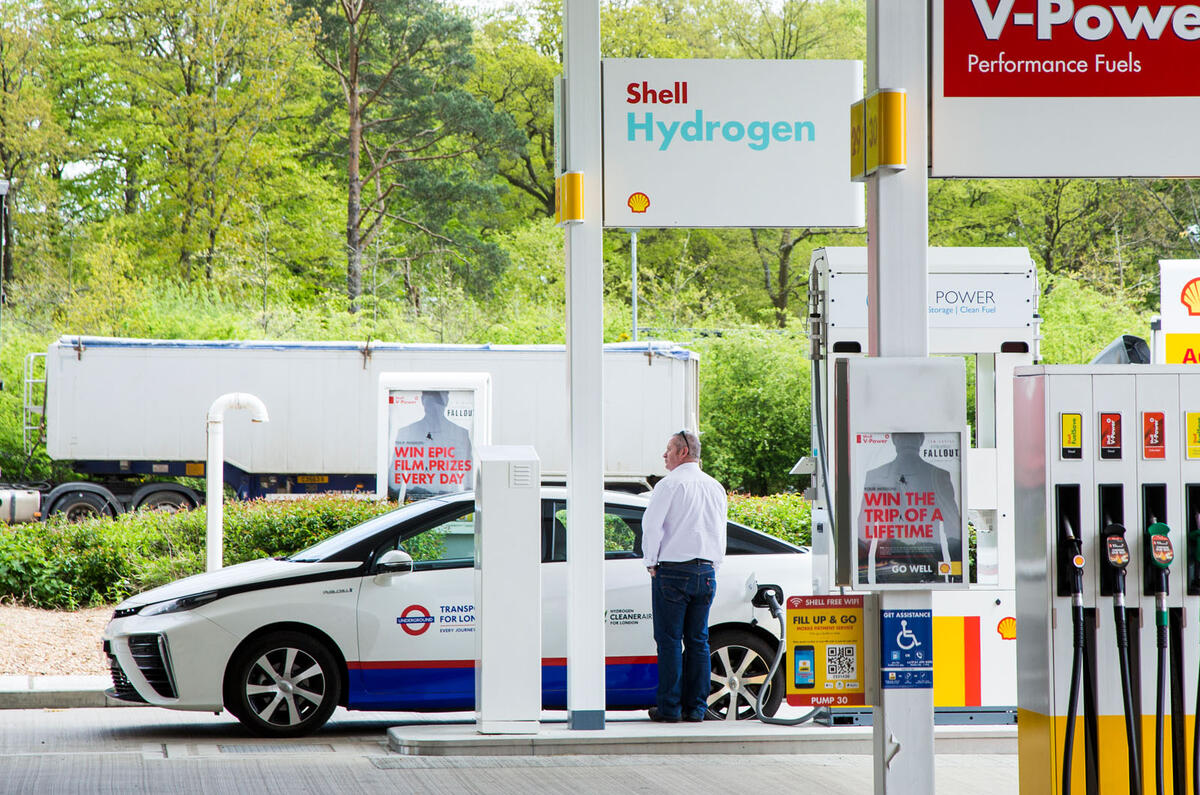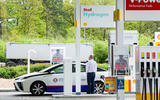Toyota is switching the focus of its hydrogen fuel-cell technology development from passenger cars to commercial vehicles.
Technical chief Hiroki Nakajima confirmed the change in approach at the Tokyo motor show.
The Japanese firm has long been a pioneer of FCEV technology, most notably with the Toyota Mirai, but wider uptake of hasn't materialised, partly due to the complexity of setting up a network of hydrogen fuelling stations.
"We have tried Mirai but not been successful," said Nakajima. "Hydrogen stations are very few and difficult to realise, so Mirai is smaller [in volume]."
However, commercial vehicles are considered far more suitable for hydrogen, not only due to the unsuitability of batteries to power them (due to the size and weight that would be needed) but also the ability to set up a more controlled fuelling network.
"For mid-size trucks, it's easy to deliver [a refuelling network] as it's mainly A-to-B" for journeys, said Nakajima. "Huge numbers of trucks go from A-to-B so you can operate stations with more stability. Commercial vehicles are the most important area to try and proceed on with hydrogen." Pick-up trucks also offered a potential use for hydrogen, said Nakajima.

However, Nakajima said Toyota "did not want to give up on [hydrogen] passenger cars" and was looking at ways to downsize components including the fuel cell stack and the tanks in order to make it applicable to different types of cars and broaden its appeal. "We are looking to downsize the hydrogen technology in passenger cars," he said.
The latest-generation hydrogen fuel cell in development is said by Toyota to half the cost of the current generation cell, while also improving durability to two and a half times that of a diesel engine. It also improves efficiency by 20%, something hugely significant in lowering fuel costs for commercial vehicles.









Join the debate
Add your comment
Trains go from A to B but commercial vehicles? Are they suggesting each depot has a fuel source installed?
Commercial vehicles are inefficient when not in use so unless there's a fuel station en-route so that idea makes even less sense that cars. What they're effectively saying is if you don't travel far from a hydrogen station then it works. e.g. service buses.
How could limiting your market make any economic sense?
It's not just the lack of H2 stations, it's the abysmal economics of hydrogen. Green hydrogen is now over $30/kg in California where there are a few thousand drivers in HFCV Mirais and Nexos (Honda gave up on the Clarity Fuel Cell). The moment the $15,000 of free fuel with the lease runs out, the cars are worthless.
BEV trucks are cheaper to operate than diesel. Hydrogen isn't, especially if the H2 is green and not made from fossil fuel.
At last Toyota see sense and cut the hydrogen car just like Honda did, just a shame it was at such cost to them.
Certainly the end to a few arguments on this site, anyhow hopefully for the last time...
Hydrogen cars go Pop